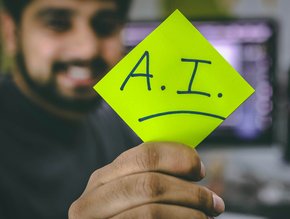Keelvar: Global disruptions drive sourcing modernisation

As supply chain challenges continue in the wake of global disruptions and fluctuating supply and demand, organisations are striving to respond to these challenges by equipping themselves with the technology that can flexibly work for both standard and complex sourcing.
“This is especially true as the need to drive non-cost objectives around sustainability initiatives, delivery speed, and more rises,” said Keelvar. “As a result, companies are increasingly modernising their technology solution suite to include both simplistic e-sourcing tools and sourcing optimisation solutions.”
Adopting this dual approach allows buying teams to meet a broader range of sourcing needs while centralising data and insights, improving sourcing outcomes, addressing new priorities, and responding more efficiently.
What’s the difference between basic e-sourcing and sourcing optimisation?
Two complementary technologies, Basic e-sourcing and sourcing optimisation can be used side-by-side in order to address different needs when sourcing suppliers. Their key difference is the level of support and analysis the tool can provide during the process.
Basic e-sourcing
“When a business is looking to buy an indirect product in bulk from a single supplier (think office furnishings or IT equipment), this technology often gets the job done. Buyers can easily make a decision based on the best deal available,” said Keelvar.
However, solutions like these can’t process additional considerations that are presented during complex issues or competing priorities.
“In today’s world where freight container prices are soaring, shipping delays are breaking records, and consumer demand continues to rapidly fluctuate, a simple e-sourcing tool won’t suffice on its own. Add to that any corporate goals around supplier diversity and sustainability, for example, and your buyers have even more to deliberate,” added Keelvar.
Sourcing optimisation
Compared to basic e-sourcing, sourcing optimisation goes beyond straightforward award decision-making based on the lowest cost. These solutions allow buyers to collect price and non-price bid information and then analyse scenarios and constraints. “This technology is also proven to yield some of the biggest ROI paybacks in procurement,” said Keelvar.
Time to optimise
Reflecting on the two solutions, Keelvar explains that both tools are critical in today’s ‘constant flux of sourcing needs’.
“The combination of two solutions that work in tandem gives businesses the agility they need to adapt and evolve in today’s market. Best practice is to run the two tools in the same environment to handle different types of spend. The key, however, is knowing when to use each tool,” explained Keelvar.
“The main takeaway here is relying on limited technology alone is no longer feasible. When executing a standard bidding event, a more simplistic tool can be the go-to option and will deliver quick and easy results. When making complex, high-stakes sourcing decisions, optimization needs to be at your right hand. A dual approach to sourcing gives procurement leaders the most coveted advantage in today’s challenging times – agility. Resilience is as simple as two technologies working together with one common goal."






